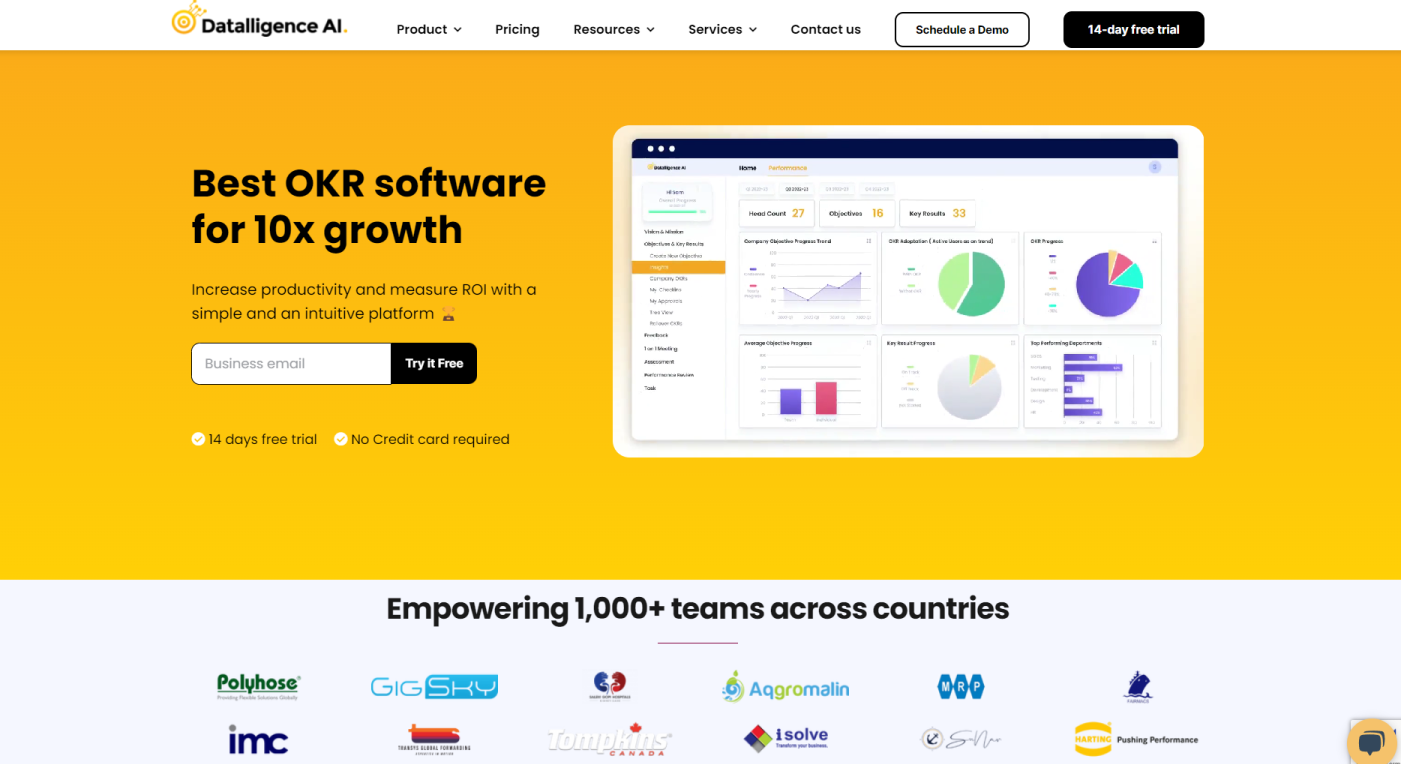A business is good as its employees. Employee engagement is one of the most important business functions that have a direct bearing on business outcomes and growth. Multiple human resources (HR) constructs together to form the employee engagement function. Employees that are engaged in their work find true value and meaning in their work and are aspiring to achieve the company’s vision through their work. HR objectives and key results need to be aligned to the organizational goals.
3 Ways OKR Engages your Workforce
The extent to which employees engaged in their work needs to be tracked and measured to evaluate the effectiveness of the HR function. Effective employee engagement is the most important condition for a company to achieve its goals. Disengaged employees present serious business issues. Setting HR OKRs is an effective way of ensuring the engagement of employees and tracking how employee contributions impact enterprise goals.
The OKRs for the HR team help them assess their efforts and understand how their efforts play out in the grand scheme of things. The transparency that comes along with OKRs used to measure HR effectiveness allows employees to align their efforts to organizational goals. By understanding corporate objectives, employees begin to see the impact of their goal-setting on the company’s results and become more engaged in their contribution to the company.
3 Ways in which OKR Engages your Workforce:
- Brings about common meaning and purpose: Employee engagement increases when they see true meaning and value in their work. OKR for employee engagement creates a line of sight between what the employees are working on with what the company’s objectives are. OKR for HR creates a framework for transparency and alignment to the company’s broader vision.
- Increases involvement and participation: Employees show more interest in contributing to ideas and initiatives where they have a direct role to play. In other words, bottom-up engagement of employees in the creation of Team OKRs gives a voice to the workforce. Involved and engaged employees create objectives that are aligned to organizational goals.
- Brings about transparency and accountability: Most organizations that work in silos lack transparency and accountability among employees. Teams cannot see how their work influences or is influenced by other teams. OKRs for HR eliminates silos by creating transparency and accountability across the organization.
Success is the driving force behind employee engagement, OKRs help in creating ambitious result-oriented metrics around the objectives employees need to be working on.
OKRs for HR – Best Practices and Examples
OKR for HR brings about strategic alignment, focused execution, employee engagement, and improves communication. Here are common examples of OKRs in HR.
1. OKR for Recruitment:
Some samples of OKRs for recruitment tasks in HR are –creating the A team, hiring the best people, improving recruitment quality, and widening the hiring pipeline. Each of these objectives is assigned 3-4 key result areas. For example:
Objective: Hiring the best people
Key results:
- Improve the quality of hire from 40 to 80%
- Decrease first-year churn rate from 30% to 10%
- Increase performance appraisal from 3.4 to 4.5
2. OKRs for HR Onboarding:
Some of the objectives for HR onboarding would be to make onboarding great and improving the onboarding program.
Objective: Improve onboarding program
Key results:
- Decrease the time to productivity from 6 to 3 weeks for new hires
- Decrease first-year employee turnover from 30 to 10%
- Increase training completion rate from 70 to 100%
3. OKR examples for training and development:
Creating a comprehensive training program, improve the effectiveness of the training program, and building a good mentorship program are some of the objectives of OKR for training and development.
4. OKR examples for employee relations:
Creating an amazing culture, improve employee relations, and building an effective employee appraisal process are some of the OKR objectives for employee relations.
Other samples for HR OKRs are for compensation and benefit and employee satisfaction.
Conclusion
The above examples for HR OKRs can be used as a guide for how to write HR OKRs and implement them. OKR software from Datalligence helps companies create OKRs for every business function. The performance and growth of a business can be effectively monitored and improved guided by these OKRs. Sign up for a free trial of our software to explore exciting ideas in setting OKRs.










